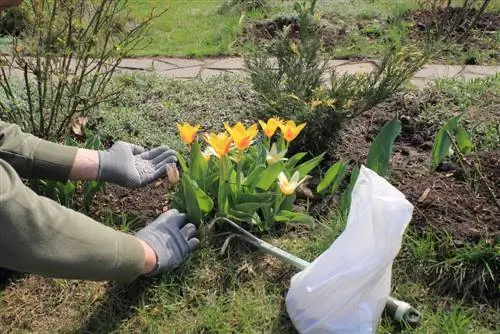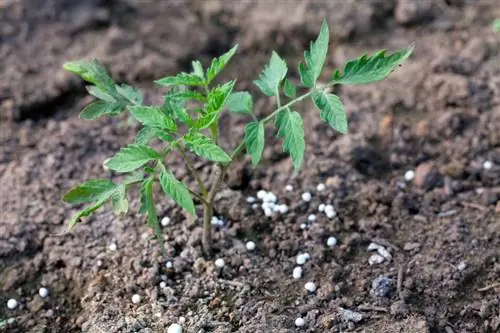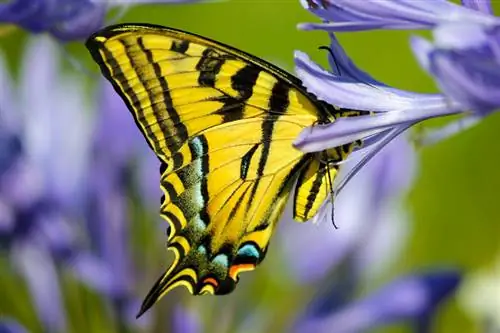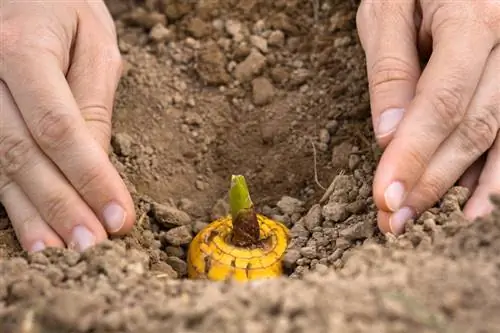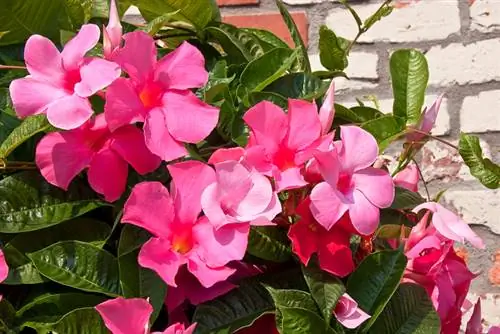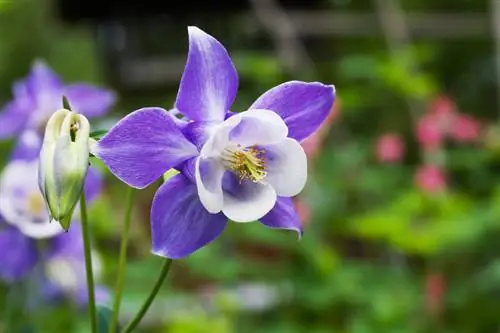- Author admin [email protected].
- Public 2023-12-16 16:46.
- Last modified 2025-01-23 11:21.
Whether the colorful flower bed blooms lushly or not depends primarily on the correct fertilization. If you follow these tips, you will soon be able to enjoy beautiful flowers.
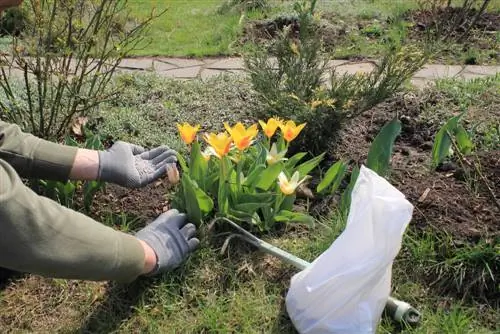
How should you properly fertilize a flower bed?
When fertilizing a flower bed, it is important to know the nutrient requirements of the plants, to use organic fertilizers such as compost and horn shavings and to provide trace elements such as iron and magnesium through primary rock flour. Before mulching, you should also spread horn shavings over large areas and work them into the soil.
Which flowerbeds should you fertilize - and which ones shouldn't?
But be careful: not every flower bed should actually be fertilized. Some perennials - such as Mediterranean plants - often cannot tolerate an additional supply of nutrients because they are used to poor living conditions. They simply couldn't handle the oversupply. Flower beds on nutrient-rich soils do not necessarily need to be fertilized - in this case too, over-fertilization does more harm than good. So before you resort to fertilizer, first find out about the actual nutrient requirements of the perennials - and ideally have a soil analysis carried out. This doesn't cost a lot of money, but gives you important information about the soil composition and fertilizer needs in your garden.
Prefer organic fertilization
In any case, an oversupply can cause serious damage, which is why restraint is recommended, at least in the use of artificial fertilizers. These should always be administered exactly according to the manufacturer’s instructions. With the use of organic fertilizers, over-fertilization is virtually impossible, as they do not release the nutrients from manure, compost, etc. all at once, but rather slowly. In particular, mature compost combined with horn shavings is a real all-rounder in the garden - apart from the fact that you support the natural nutrient cycle by using organic fertilizer.
Trace elements are important
In addition to the most important minerals nitrogen, phosphorus and potassium - the main components of every fertilizer - the plants also need important trace elements, without which deficiency symptoms can quickly occur. Iron, magnesium, copper, calcium, etc. contribute to he althy plant growth and lush flowering. In order to adequately supply the plants in your flowerbed, you can apply primary rock powder (€17.00 on Amazon) in the spring. However, this treatment is only suitable for plants that tolerate lime.
Don’t forget to fertilize before mulching
Bark mulch is applied to many flower beds. Unfortunately, the material binds important nutrients, especially nitrogen, through its decomposition processes, which in turn can hinder the growth and flowering of the perennials. To avoid this, spread horn shavings over large areas before mulching and work them lightly into the soil. The organic fertilizer releases the nitrogen gradually, so that bottlenecks in the supply are avoided.
Tip
If you fertilize with blue grain and other complete fertilizers, use them sparingly - and stop fertilizing in July for perennials. Otherwise, the plants will not be able to mature in time for winter and will therefore become more sensitive to frost.

